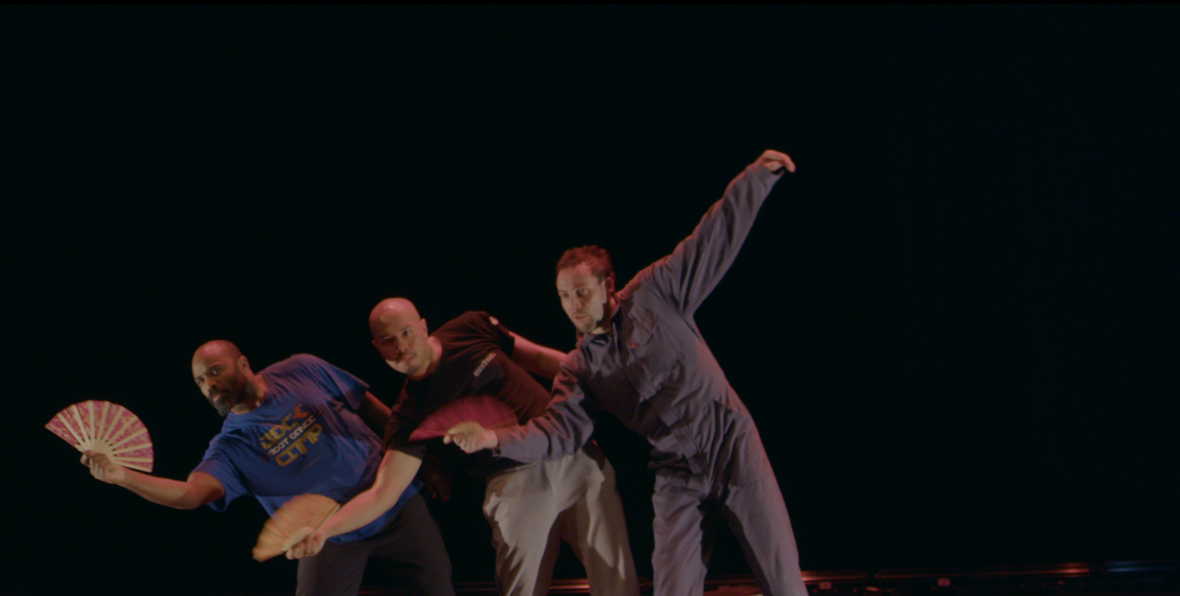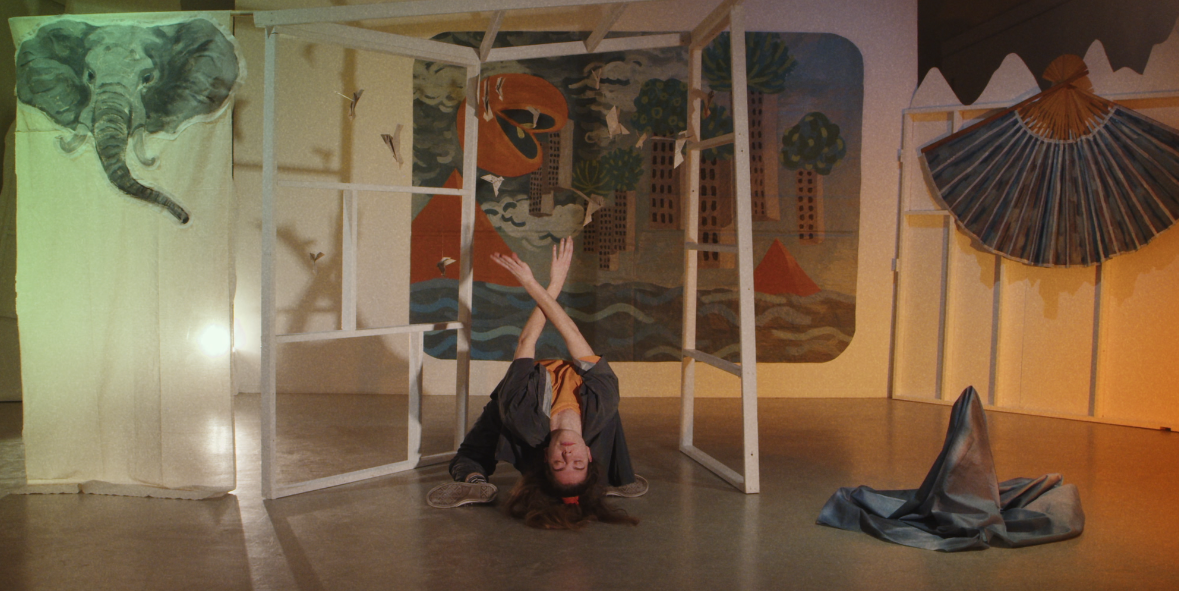07 mar. 2024Moitié Moi by Kim El Ouardi & Nora Wagner

Photo: Benoît Callens, Moitié Moi © Kim El Ouardi & Nora Wagner
“They wanted a simple documentary, but I said I will make something more of it.” Kim El Ouardi had a vision. Together with the multidisciplinary artist Nora Wagner, the filmmaker goes on a quest to create the poetic dance portrait that is "Moitié Moi".
Four dancers explore their identities through the movement of their bodies. The individuals merge together into a new whole to perform a popping choreography to the grooving beats of House.
“Does the act of doing everything together have an impact on our identity?”, Franklin Pereira, a member of the Knowedge collective, asks during one of the rehearsals for Patchwork, a dance play that was performed during Esch22.
“For me, dance is a very universal language. We can really see the person through their movement”, Kim El Ouardi says, who has always been fascinated by this art form. When Franklin asks him one day to document the creative process behind their new play, Kim says ‘Yes, but...’

“The dancers talk about identity, so I wanted to make them express themselves through dance.”
Moitié Moi follows the dancers through their rehearsal phase, and floats somewhere between documentation and fiction. Sometimes we see the dancers hustling across an imaginary crosswalk, at other times, the dancers are sitting in a circle, exchanging ideas of identity. Sometimes they rehearse a choreography, and at other times they engage in serious talk. But then, the film also dives into the minds of the artists.
“In the beginning, they were kind of strangers to each other”, Kim states. Each one of them had to find his or her own place within the group, and the film takes an intimate look at the individual reflections that led to its formation and also to the final show. “After all, it was their own narration, their own show. They wrote it, and they developed the choreography”, Nora adds.
At the same time, the film opens up a wider discourse. “The dancers talk about identity, so I wanted to make them express themselves through dance”, Kim says. “The idea was to add a more surreal and poetic part to it”, Nora points out. “Kim asked me to develop a set of questions that could help to make an unusual portrait of people, and then we decided to make a danced portrait.”

“It was a very intimate setting.”
In her very own private room, Nora Wagner welcomed the dancers for an interview. The questions she asked didn’t allow preconceived answers, as she says, and were designed to provoke unexpected replies. “It was a very intimate setting. I somehow opened up to them first and said ‘This is my personal space!’ I think that helped them to show themselves in a vulnerable way, too.”
Based on the answers, Nora built a different film set for each artist that represented his or her inner world. In a surreal and dreamlike, but not less real, environment, the dancers then proceed to tell their story in movement. In a solo dance, seemingly all by themselves, they speak of hope and loss, of insecurities, of solitude, and of the need for belonging.
“Our main goal, I would say, was to activate the awareness of the viewers so that they start questioning their own habits, their own place in society, so that the portraits kind of serve as a starting point for their own reflection”, Kim says. “In our mind”, Nora adds, “we were talking to teenagers, because they may look for their identity a lot more than adults. We wanted to help young people position themselves and encourage them to become critically thinking individuals.”

“How much of whom is actually in these portraits?”
Kim and Nora accompanied the dance crew over the course of two years. During that time, the four dancers grew closer together. “I could clearly see the evolution”, Kim states. But not only did the dance group evolve, but so did the filming duo. “We were supposed to be very separate from the dancers and to just follow them around”, Nora says. “But our relation to them changed during the process, and these two works [the film and the play] started to merge. The dancers began to reflect on things they hadn’t thought about before the interviews. The two projects nourished each other.”
The creation process of the film, like the danced portraits within the film, reinforces the idea of blending fiction and reality yet again and brings the viewer closer to the protagonists and even the human beings behind the camera. After all, “how much of whom is actually in these portraits?” Nora asks.

Screening and workshop
Moitié Moi is a beautifully assembled piece of performative art packed into a medium-length film on limited budget that shows the dreams and struggles of the individual striving to fit in.
The film is part of this year’s Luxembourg City Film Festival programme and will be screened at Utopia today, on 7 March 2024 at 7 p.m., in the context of the Screenings on Inclusion series of Cercle Cité. Coming screenings will take place on 3 June 2024 at Trois C-L and later this year at the official premiere at Kulturfabrik (to be announced).
On 8 and 9 March 2024 Cercle Cité invites the public to a workshop with Kim El Ouardi, where the participants learn how to make short documentary films on a low budget. Kim is well-versed in many aspects of film production and loves the simplicity of working with minimal resources. By sharing his knowledge, he hopes to open up filmmaking to everyone.
Les plus populaires
- 26 juin. 2024
- 28 juin. 2024
- 05 juil. 2024
- 04 juil. 2024
ARTICLES
Videos
26 juil. 2024TAPAGE avec Ruth Lorang
Articles
22 juil. 2024Le fabuleux destin de Raphael Tanios
Videos
19 juil. 2024

